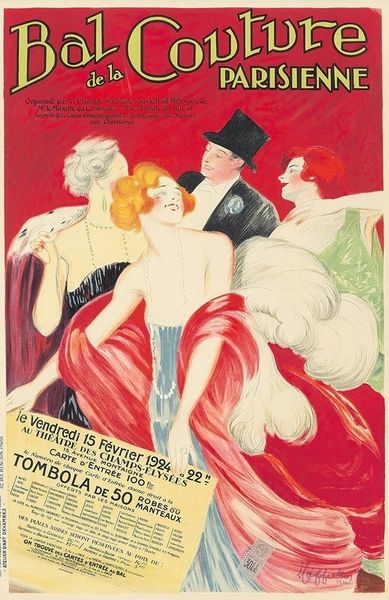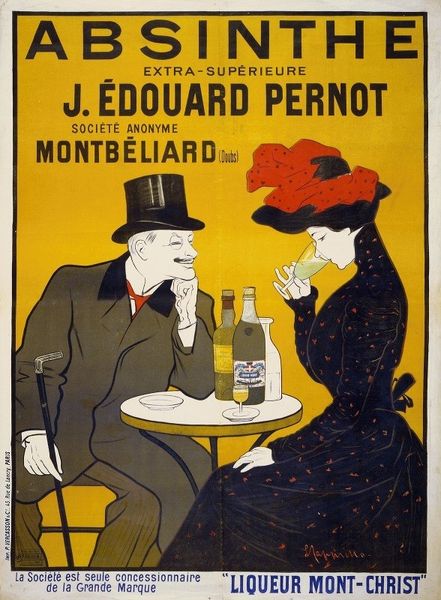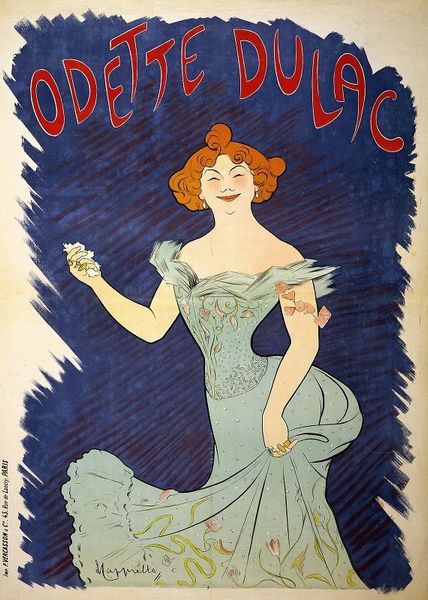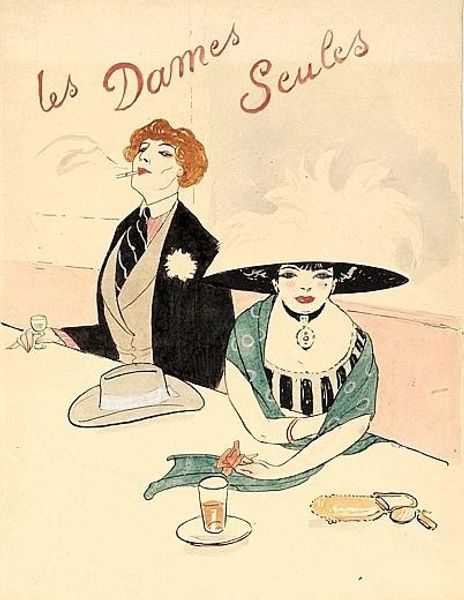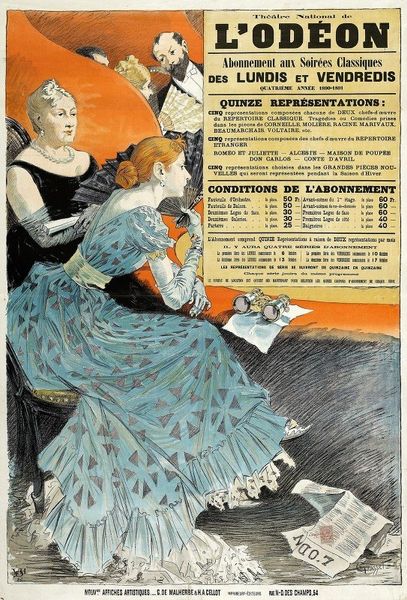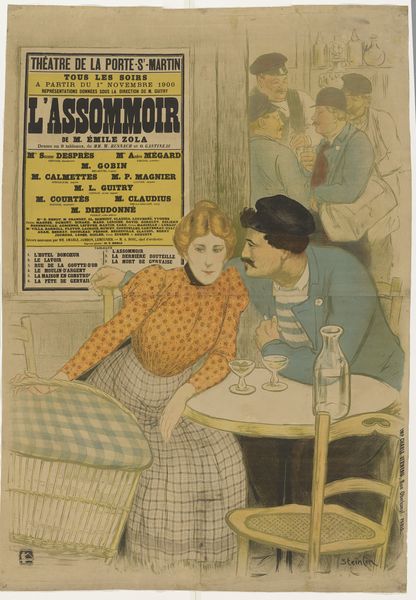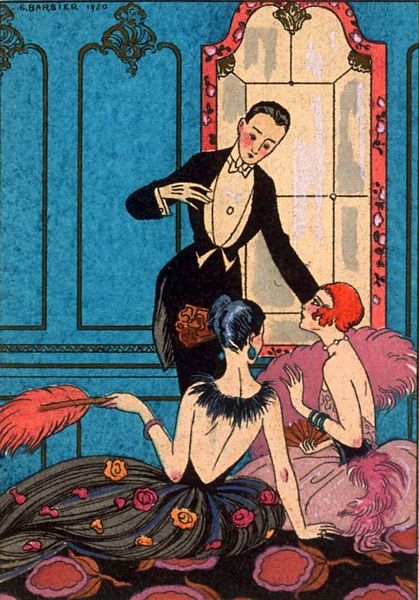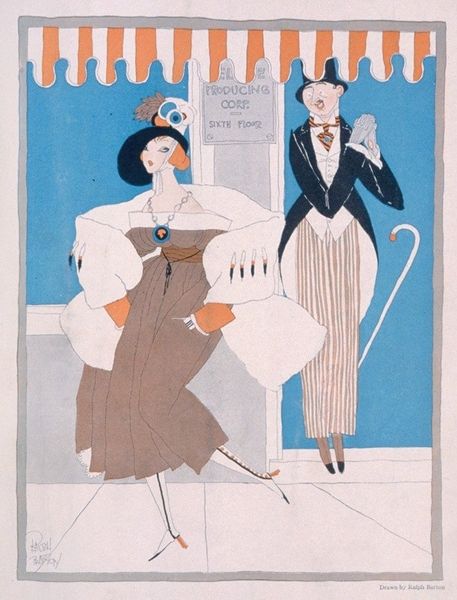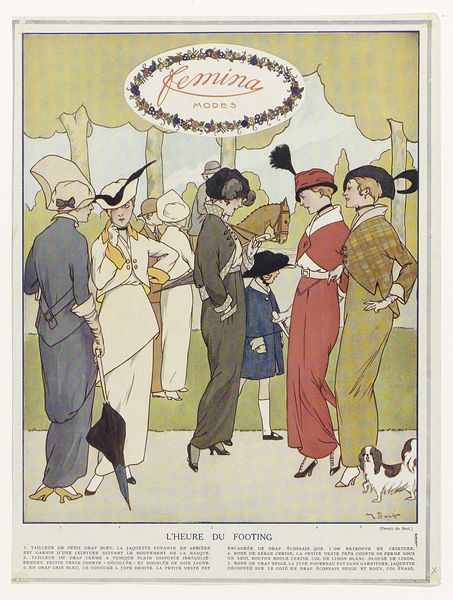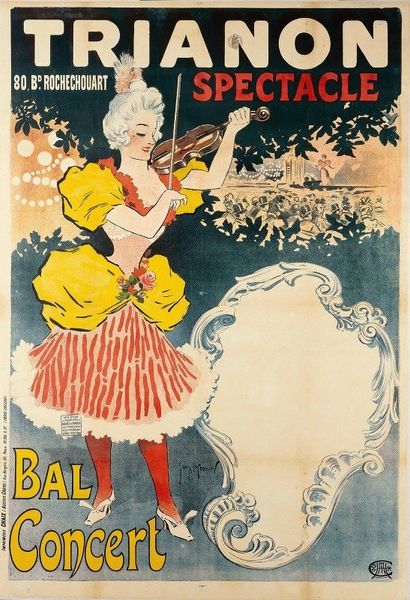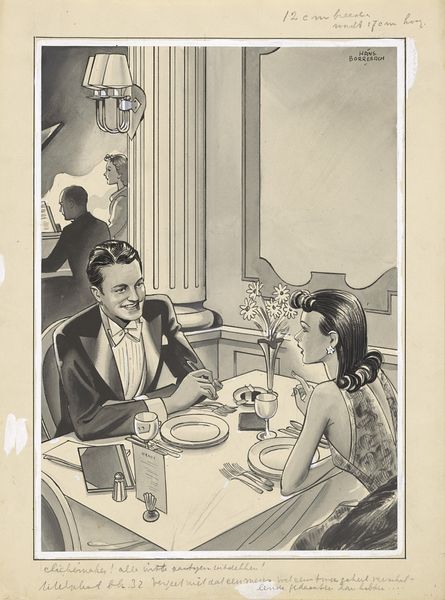
Copyright: Public Domain: Artvee
Jules Chéret created this lithographic poster to advertise the Taverne Olympia. The traditional method of lithography involves drawing with greasy crayon onto a flat slab of limestone, which is then chemically treated so that ink adheres only to the drawn areas. Here, the vibrant colors and bold lines suggest a scene of lively entertainment and indulgence. The lithographic process allowed for the mass production of posters, making art accessible to a broader audience and turning the streets into galleries. Chéret was a master of this technique, creating posters that captured the spirit of Parisian nightlife. The soft, almost watercolor-like quality, belies the industrial process involved, reminding us of the skilled labor and technical expertise that went into producing these eye-catching advertisements. These posters were integral to the burgeoning consumer culture. By understanding the making of this poster, we gain insight into the art, commerce, and social life of the time, blurring the lines between craft, design, and fine art.
Comments
No comments
Be the first to comment and join the conversation on the ultimate creative platform.
